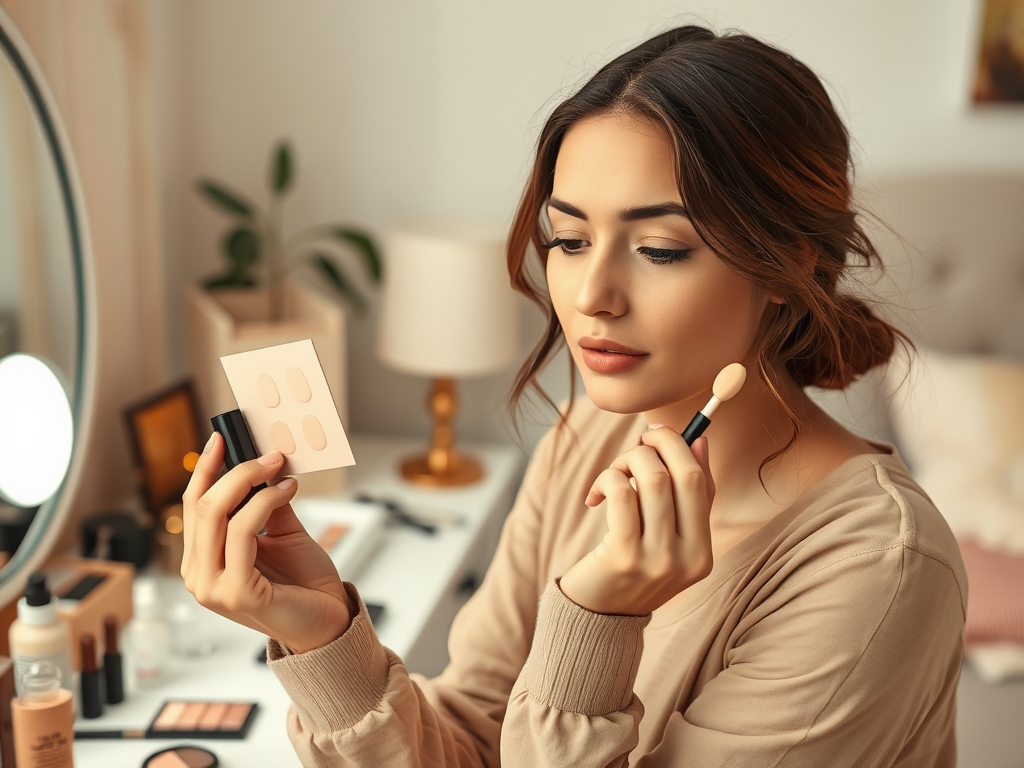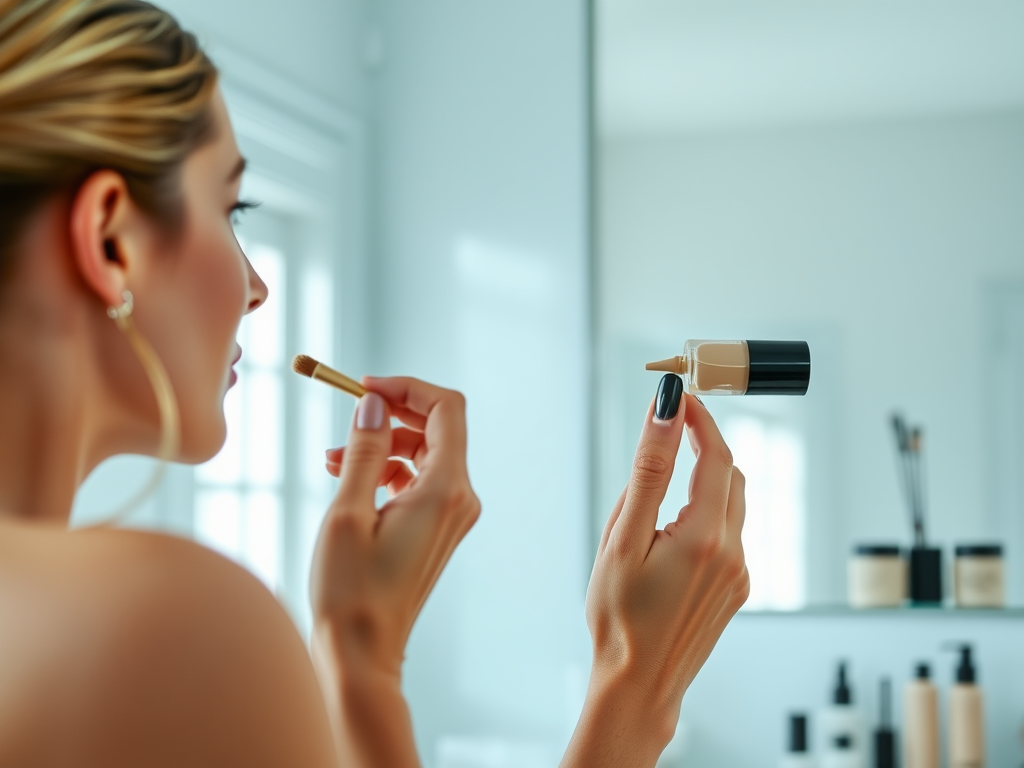If you’re striving for a flawless makeup look, the secret often lies in the spaces between your products. The application of concealer before foundation might seem like a subtle step in your makeup routine, yet it can create a transformative impact. Many beauty enthusiasts argue it gives an airbrushed appearance without the need for heavy foundation. When applied correctly, concealer can become your best friend in minimizing imperfections like dark circles, blemishes, and any unevenness in skin tone. This article delves into the best techniques to apply concealer effectively, ensuring your complexion is ready for a radiant layer of foundation. Let’s unlock the potential of concealer together, turning your makeup routine into a flawless art form.
Understanding the Importance of Concealer

Concealer is not merely an accessory in your makeup kit; it’s an essential tool for achieving a smooth and even complexion. It’s specifically designed to cover imperfections that foundation may overlook, such as dark spots and fine lines. By targeting specific areas, concealer enhances the look of your complexion, allowing foundation to work its magic without battling noticeable flaws underneath. This creates an optimal base, evoking a polished and perfect finish. Furthermore, knowing the right places to apply concealer can amplify your features, drawing attention to your best attributes. Investing time in understanding your concealer is a game changer for your makeup application.
Choosing the Right Concealer

Selecting the appropriate concealer for your skin type and concerns can be daunting with the plethora of options available. Here are some key considerations to guide your decision:
- Skin Type: Assess whether your skin is oily, dry, or combination. This will impact the formula you choose.
- Coverage: Concealers offer various levels of coverage: full, medium, or sheer. Identify your needs based on visible imperfections.
- Formula: From creams to liquids and sticks, the texture you prefer can affect how well the concealer blends into your skin.
Once you’ve narrowed down your choices, it’s beneficial to test different products. Swatch a few on your jawline to find the perfect match for your skin tone. Remember that lighting can affect how you perceive the color, so it may be worth checking in natural light as well. Understanding these fundamentals will set the foundation for successful application.
Preparing Your Skin
Properly preparing your skin can dramatically enhance the application and longevity of both concealer and foundation. Start with a meticulous cleansing routine to remove any lingering dirt or impurities, providing a clean slate. Following cleansing, it’s vital to hydrate your skin with a lightweight moisturizer. This step ensures that concealer doesn’t cling to dry patches, which can result in a patchy appearance. Applying a primer afterward can also fill in pores and fine lines, creating a smoother texture for makeup application.
| Step | Product | Benefit |
|---|---|---|
| Cleansing | Gentle Cleanser | Removes impurities and refreshes the skin |
| Moisturizing | Hydrating Moisturizer | Keeps the skin supple and smooth |
| Priming | Smoothing Primer | Prepares the skin for seamless makeup application |
Techniques for Applying Concealer
Employing the right techniques for applying concealer can make a significant difference in achieving a seamless look. Here, we will explore a few effective methods:
Spot Concealing
Spot concealing is ideal for covering specific blemishes or imperfections. To do this effectively, use a small brush or your fingertip to apply concealer directly onto the affected area. It’s essential to use a light hand, as overly aggressive application can lead to an unnatural finish. After application, blend gently around the edges to ensure that it transitions smoothly into your foundation.
Highlighting Areas
Concealer can also serve as a highlighter. To bring attention to your features, consider these tips:
- Under the Eyes: Apply concealer in a triangular shape to brighten and lift the area, making you look more awake.
- Center of Forehead: A dab of lighter concealer here adds dimension and light.
- Bridge of Nose: Highlighting this area can create a more sculpted appearance.
Correcting and Blending
When it comes to correcting uneven skin tones, blending is essential. Utilize a damp beauty sponge for a seamless finish, as it helps to press the product into your skin evenly. It is advisable to apply concealer in thin layers and build up coverage gradually. This method ensures that your makeup looks more natural and less like a mask. Remember, the key is to create a flawless blend between the concealer and foundation so they work cohesively.
Completing the Look
After your concealer is in place, the next step is applying foundation. Using a foundation brush or sponge, gently dab the product over the concealer. Begin at the center of your face, where coverage is often most needed, and work outwards to avoid a heavy-handed look. Once you’ve applied foundation, consider setting your makeup with a translucent powder. This not only helps eliminate shine but also locks everything in place for all-day wear. Completing this step ensures that the concealer and foundation work together harmoniously.
Conclusion
Mastering the application of concealer before foundation is a fundamental skill that can greatly enhance your makeup routine. By selecting the right products for your skin type, preparing your canvas effectively, and employing precise application techniques, you can achieve a flawless finish. Whether you aim to cover blemishes, highlight features, or simply create a smooth look, taking the time to invest in your concealer application pays off in the long run. Embracing these techniques will help you navigate your beauty routine with confidence, allowing your natural beauty to shine.
Frequently Asked Questions
- What type of concealer should I use for dark circles? Opt for a creamy concealer with a peach or orange undertone to counteract the purple hues of dark circles.
- Should I apply concealer before or after foundation? Applying concealer before foundation allows for better coverage and helps to hide imperfections effectively.
- Can I use my fingers to apply concealer? Yes, using your fingers can help to warm the product and ensure a seamless blend, especially for cream-based concealers.
- How can I prevent my concealer from creasing? To prevent creasing, set your concealer with a light dusting of translucent powder after it has dried.
- Is it necessary to use a primer before concealer? Using a primer is not strictly necessary, but it can help create a smoother base and enhance the longevity of your makeup.